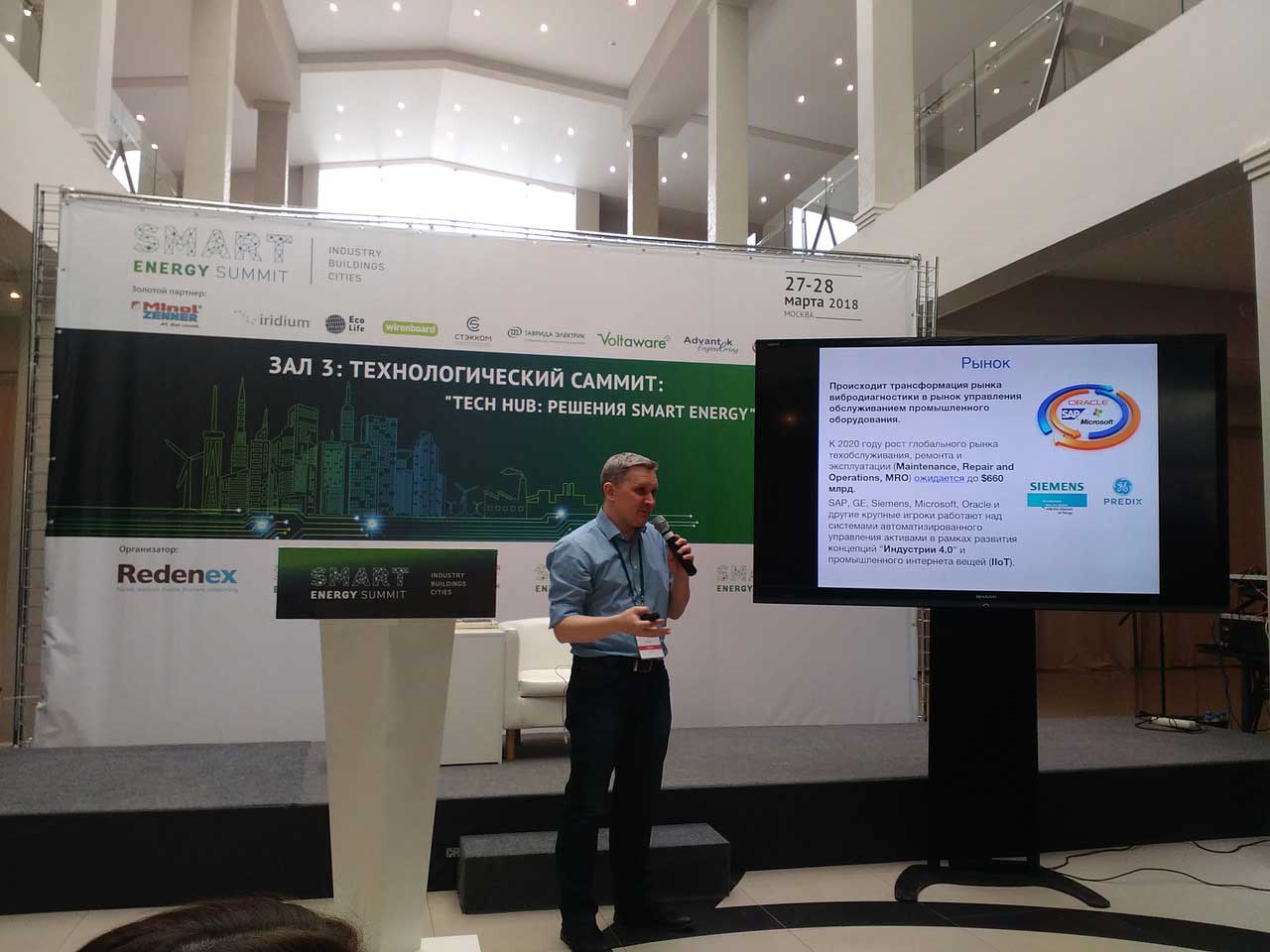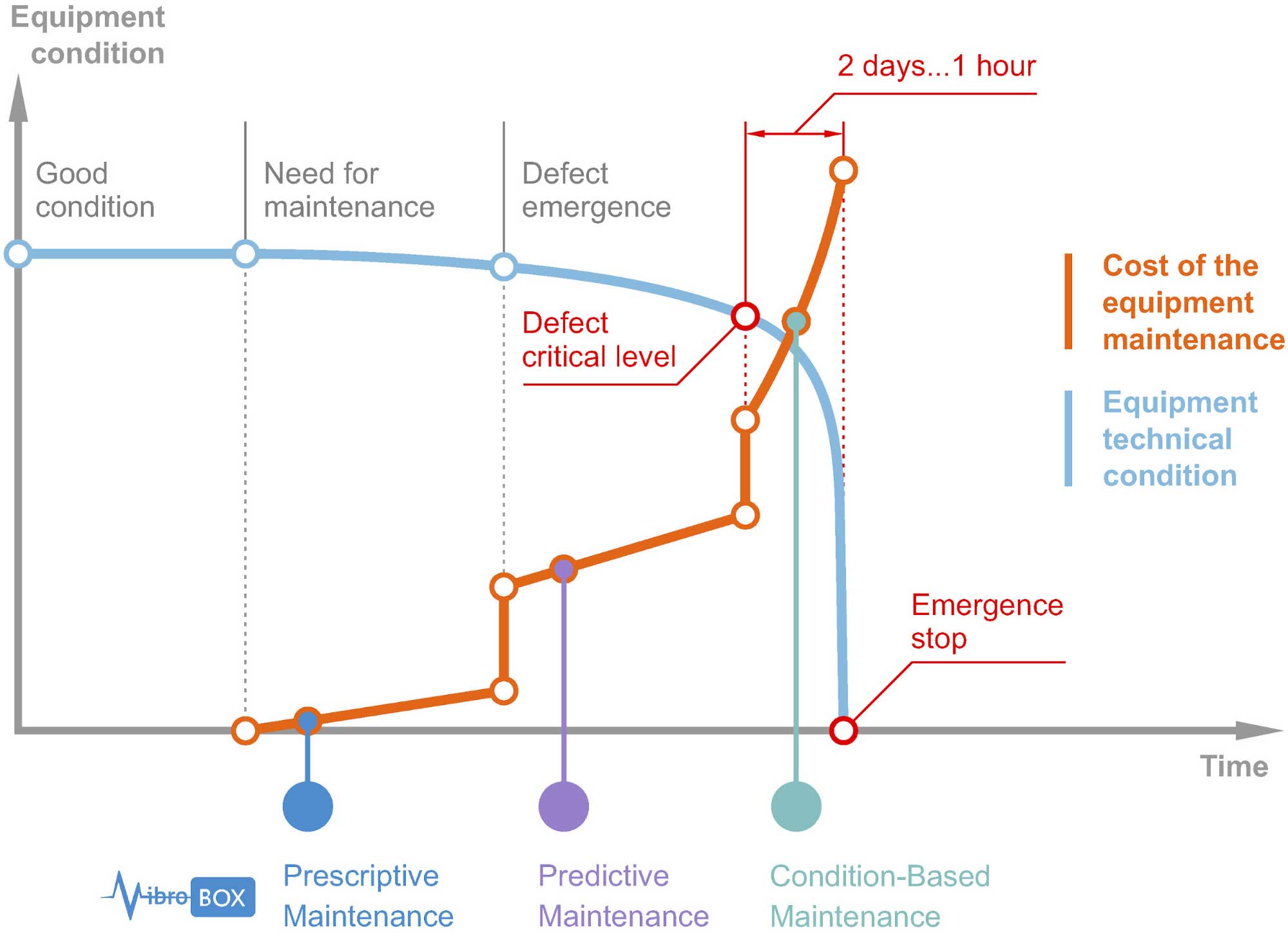The Main Award of Smart Energy Summit 2018 goes to VibroBox
March 27-28, 2018, Moscow hosted the International Smart Energy Summit 2018, attended by more than 400 participants. The Summit was dedicated to cutting-edge technologies in the energy industry. Experts from more than 15 countries have presented their projects and solutions for the field.
The organizer company Redenex has put together a series of pitches to explore leading technological innovations which promise to solve the challenges of the efficient asset management. Numerous startups have presented their innovative ideas and digital solutions, scalable for industrial production.
Russia’s as well as Commonwealth of Independent States (CIS) top ten projects were ranked by experts from GenerationS, Skolkovo and VentureClub accelerators. VibroBox received the highest rating and was awarded the main prize from the Summit organizer.
Ph.D. in Digital Signal Processing and a CEO of VibroBox Igor Davydov presented our technology.
Currently, tech-heavy industrial enterprises are interested in a scalable and automated solution for assessing equipment’s health to improve Asset Maintenance Management. VibroBox offers a unique technology for Prescriptive Maintenance to address service issues efficiently.

Igor Davydov gives a talk about VibroBox Prescriptive Maintenance service.
Summary of VibroBox CEO Igor Davydov’s presentation
During the lifecycle of the equipment, its technical condition successively passes through a series of typical phases. The costs of maintenance and repair are directly related to these phases.

Typical stages of equipment degradation, associated maintenance technologies, and total expenses.
In the process of utilization, production assets inevitably require timely maintenance. It is crucial to eliminate the imbalance of rotors, misalignments of shafts, replace dirty lubricant, etc. to keep equipment in excellent technical condition for the long run. Timely detection and elimination of issues does not allow the emergence and development of defects in critical equipment units. Ignoring this step leads to unfavorable conditions of internal components of equipment and their accelerated degradation, and ultimately to unplanned and costly repairs. The potential outcomes of defects mentioned above are jamming of bearings and gears, breaking of shafts, unexpected downtimes, and even disasters.
It is fundamentally essential to identify internal machinery defects at the earliest stage. Why? Because spare parts can be purchased in advance, repairs can be done without an emergency stop; technicians can be scheduled at the most convenient time, and so on. If the problem has not been identified and eliminated, then over time it develops and reaches critical levels. In this case, the temperature of the defective unit, the overall level of vibration as well as the energy consumption and other integral metrics increase. Condition-Based Maintenance (CBM) systems work based on the monitoring of these metrics. However, the state of the defective unit no longer allows to reliably predict the duration of its service, it can get jammed even in an hour. Therefore CBM-systems perform the function of emergency shutdown and allow to avoid only the occurrence of major breakdowns, accidents and unpredictable consequences associated with industrial disasters. In short, it is too late for efficient maintenance and too expensive for business.
Predictive Maintenance systems detect equipment defects in the early stages of their development. Therefore they enable maintenance planning without waiting for the transition of these defects to the critical stage. The key drawback of Predictive Maintenance systems is that they detect the defects which are already developing and leading to equipment failure. Can we do better and avoid defects and failures with a timely maintenance?
The most promising are Prescriptive Maintenance systems. These systems are designed to identify and eliminate issues in internal parts of equipment before they lead to defects and failures. Thus, they provide:
- maximized reliability and equipment safety;
- greater cost reduction in maintenance and repair;
- elimination of unplanned downtimes, accidents, and related consequences.
As a result, companies reduce risks significantly and optimize business and maintenance processes.
Combining Condition-Based Maintenance with Machine Learning (ML) and Artificial Intelligence (AI) is a modern practice to automate Predictive and Prescriptive Maintenance systems. But this tactic does not bring the service to a new level of technical and economic efficiency for the following reasons:
- each case requires a lot of time to train neural networks (weeks, months, and even years), during this time no prescriptions are available, there is only maintenance based on the current diagnostic data;
- right after any repair or alteration of equipment operation modes, neural networks need to be retrained again from ground zero;
- ML-based decision-making system does not support specific defects of equipment internal components (such as bearings, shafts, gears, etc.). This dramatically limits the efficiency of maintenance and often requires human experts.
These conditions explain why expert-oriented systems (Predictive or Prescriptive) are popular on the market now. However, involving people in the decision-making process severely limits the use of these systems, often making it economically impractical (especially for small and medium businesses). Moreover, the implementation of the concepts of Industrial Internet of Things (IIoT) and Industry 4.0 is impossible without fully automated and easily scalable maintenance management systems.
VibroBox implements the concept of Prescriptive Maintenance as an easily scalable automatic service for vibration-based diagnostics. The facts that determine the key advantages of VibroBox are:
- the technology is completely automated and there is no need for human-experts in decision-making process;
- diagnostic results include a detailed description of the defects in specific internal parts and components of equipment like bearings, shafts, gears, etc.
- detailed maintenance instructions (prescriptions) for internal components are provided to eliminate the future breakdowns;
- diagnostics results and actionable maintenance instructions are available in 3 to 7 days, regardless of equipment type, previous repairs or changes to a technological process (long-term preliminary research, data collection or training of the decision-making system are NOT required).
Read more about the summit on the Energy and Industry of Russia website.
More information about VibroBox technology.